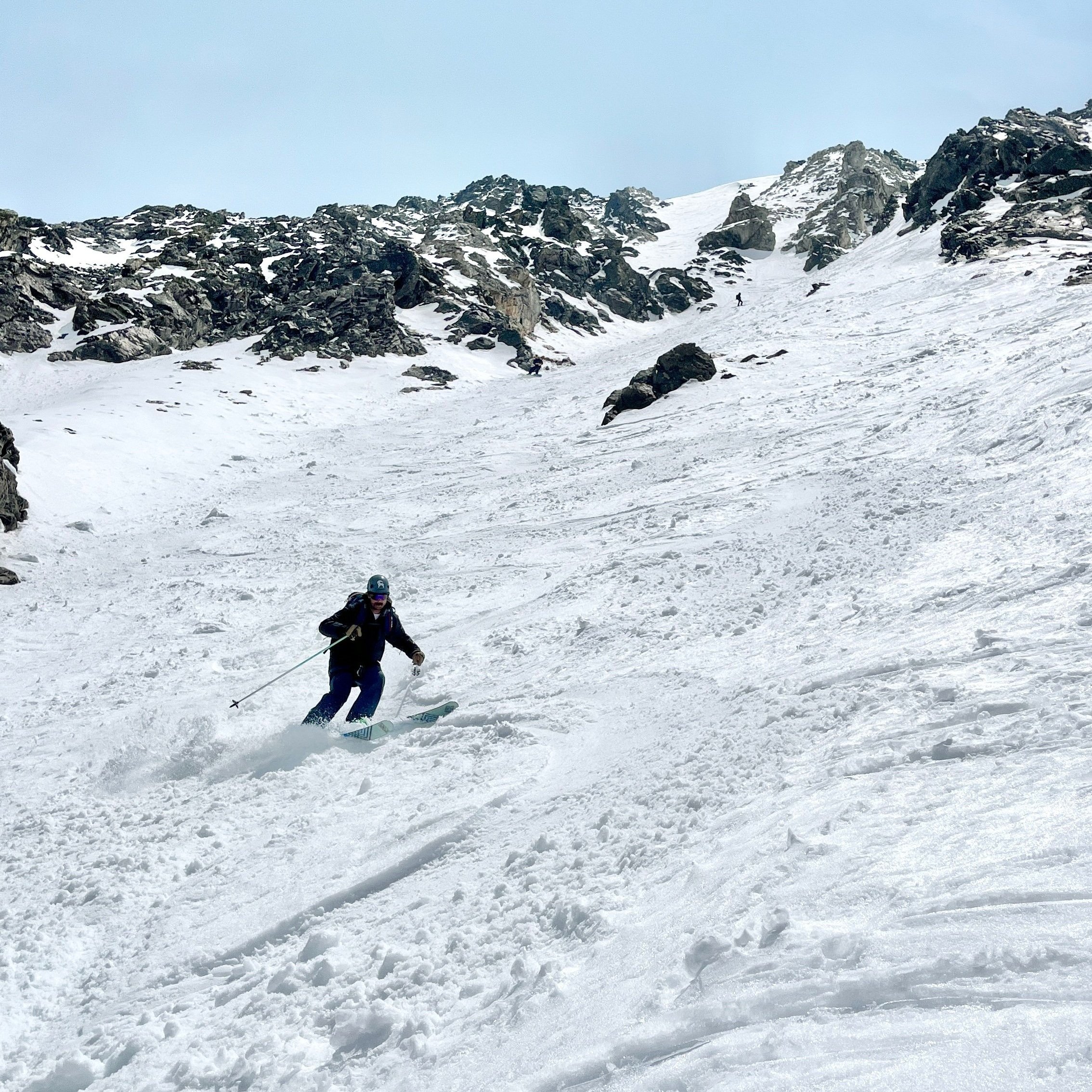Skiing the Emperor Couloir, Torreys Peak
Corn turns in Late May in the Emperor Couloir, with the continental divide in the background.
On May 23rd, 2023, Brent Butler and I guided a group of four skiers and snowboarders on a technical ski mountaineering mission, skiing the Emperor Couloir on Torreys Peak after climbing Kelso Ridge. A classic ski mountaineering peak of the Front Range, Torreys Peak is one of the more accessible routes for those hoping to ski the 14ers, featuring multiple fantastic fall-line ski descents from its summit. And, it’s location close to the continental divide means that it holds snow well into the summer. It is often skiable into July.
The upper reaches of the Kelso Ridge, with the summit of Torreys Peak and the Emperor Couloir (right)
This group was training to climb the Grand Teton in early-summer conditions, and needed some experience climbing mixed snow and rock in crampons and boots. The Kelso Ridge, while not the easiest way up Torreys Peak, has a few technical rock steps and plenty of scrambling, making it a great alpine climbing training route. The group also happened to be composed of expert skiers, so we decided to take the fast way down, carrying our skis up the route and skiing the steep and exposed Emperor Couloir.
Skinning from the trailhead as the sun rises on Grays Peak (right) and some rarely skied couloirs (left)
After about an hour of skinning, we put our skis on our backpack and donned crampons, which were useful in climbing the mixed snow and rock on the Kelso Ridge. A rope helped provide security through some of the more difficult sections of climbing. After about four hours of climbing, we reached the summit of Torreys Peak, and the hard part was over.
Scrambling through an exposed section of the Kelso Ridge on Torreys Peak
We enjoyed the summit views, and bathed in the sunshine. The late May weather was warm and pleasant, and we were comfortable in just sun hoodies and light jackets. Smoke from Canadian wildfires hindered the views, but it was rewarding nonetheless. We took our time getting ready for the downhill skiing, letting the snow soften perfectly for our descent of the steep Emperor Couloir.
Brent, always stoked, and two of our group members on the summit of Torreys Peak
The Emperor couloir starts with steep, 45-degree turns on a planar face that funnel into a tight choke after about 500 vertical feet. This top section above the choke is exposed and consequential, as a fall would send you tumbling through the rocky choke and down the steep couloir below. And, it’s northerly aspect means the snow is often firm, unless you time it perfectly. We skied one at a time, making hop turns to start, then connecting turns as the snow softened and we gained confidence in the conditions.
After sliding through the choke, the couloir continued with almost 3,000 vertical feet of moderately steep skiing and perfectly softened corn snow. This sustained, steep, exposed, and fun skiing is what makes the Emperor Couloir such a great line.
Looking up the Emperor Couloir from the middle of the line, with the steep top section and choke above
After 3,000 feet of leg-burning steep skiing, we made it to the valley bottom, where some light slogging, amde more interesting by an early-summer thunderstorm, led us back to the cars in time for lunch and a beer.
Looking up the never-ending descent of the Emperor Couloir on Torreys Peak







